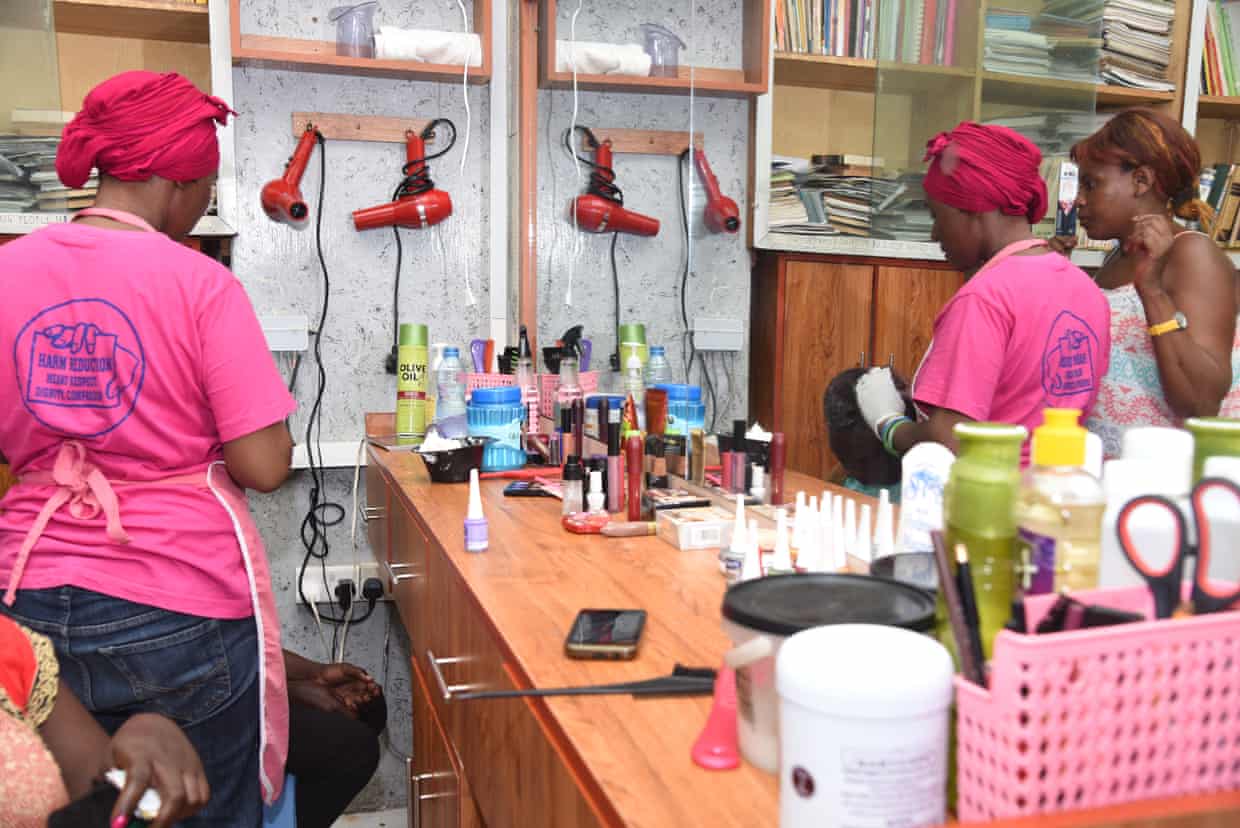Naima Said stands back and studies her handiwork. “Not quite,” the 31-year-old self-taught beauty therapist mumbles, her forehead furrowed in frustration.
She delicately dabs her client’s eyelid with a squishy make-up sponge, eyebrow pencil at the ready. She keeps dabbing — she’s not finished yet.
Several years ago, Naima used YouTube to train on everything, from hair dying to pedicures.
Now she runs Beauty Corner — a small, if perfectly formed, parlour in Mombasa. Every weekday from 8am, she lays out her tools and waits for women to walk through the door.
In front of her, one three-metre mirror is lined with a messy array of shimmery eye shadow palettes, and baby pink baskets brimming with hair-rollers.
But this isn’t just any beauty parlour. The women who seek Naima’s services are addicted to heroin, or they’re recovering.
Housed in the Reachout Centre Trust, which helps Mombasa residents fight drug addiction, it opened last year with a view to attracting more female users to its services that include HIV testing, counselling, methadone treatment and cervical cancer screening.
Illegal Production
Naima herself abused heroin for ten years. When her father could no longer afford to pay for private school, she was at a loose end.
Aged 17, she started smoking marijuana with her friends. By 21, she was a full blown heroin addict. “I was half-dead, half-alive,” she recalls.
“I started sex work so I could afford to pay for my next hit. On the streets, you need to look beautiful, but I looked dirty. I was a junkie. People would see me and get scared.”
Until fairly recently, hard drugs, especially heroin, were rare in Africa. But since 2010, heroin use across the continent has grown faster than anywhere else in the world, the UN “Office on Drugs and Crime” (UNODC) 2015 report says.
The reason is two-pronged. Despite millions of dollars spent by the United States and its allies to curb illegal poppy production in Afghanistan, there has been an almost continuous rise in the amount grown, Simone Haysom of the Global Initiative Against Transnational Organised Crime (Giato) points out.
In 2017, opium farming reached a record high (jumping 87 per cent in one year). Despite shrinking 20 per cent since then, Afghanistan still produces 82 per cent of the world’s heroin — and remains the largest opium-producing country.
Trade Routes
Meanwhile, Africa has increasingly become an attractive drug transit route.
Historically, most of the heroin trafficked to the West from Afghanistan came overland via what’s known as the ‘Balkan route’.
Conflict and increased enforcement made this path trickier to navigate, according to a report by Giato. Instead, smugglers have hit the seas.
Since 2010, the ”southern route”, also known as the ”Smack Track”, has grown in popularity, where heroin travels from Afghanistan via the Indian Ocean into East and South Africa.
It then makes its way to Europe, Asia and North America. As more heroin floods into East Africa, a growing number of people are getting addicted to it.



